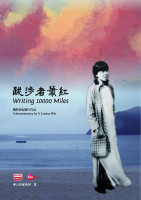Writing 10000 Miles Filming Locations
Writing 10000 Miles Filming Locations
Harbin is the capital of Heilongjiang, China’s northernmost province. The city grew in the late 19th century with the influx of Russian engineers constructing the eastern leg of the Trans-Siberian Railroad. The city's Russian architecture includes its green-domed Saint Sophia Cathedral, an Eastern Orthodox church now a local history museum. Across the river, Sun Island Park is famed for year-round ice sculptures.
Qingdao, in China’s eastern Shandong province, is a port city of skyscrapers, parks and beaches bordering the Yellow Sea. It's known for its beer, a legacy of the German occupation (1898-1914). The Tsingtao Beer Museum celebrates the namesake brewery, founded here by Germans in 1903, and the Qingdao International Beer Festival is major event. There's also German-style architecture in the old city center.
Beijing, China’s sprawling capital, has history stretching back 3 millennia. Yet it’s known as much for modern architecture as its ancient sites such as the grand Forbidden City complex, the imperial palace during the Ming and Qing dynasties. Nearby, the massive Tiananmen Square pedestrian plaza is the site of Mao Zedong’s mausoleum and the National Museum of China, displaying a vast collection of cultural relics.
Shanghai, on China’s central coast, is the country's biggest city and a global financial hub. Its heart is the Bund, a famed waterfront promenade lined with colonial-era buildings. Across the Huangpu River rises the Pudong district’s futuristic skyline, including 632m Shanghai Tower and the Oriental Pearl TV Tower, with distinctive pink spheres. Sprawling Yu Garden has traditional pavilions, towers and ponds.
Chongqing is a sprawling municipality at the confluence of the Yangtze and Jialing rivers in southwestern China. In the city center, the large, domed Great Hall of the People complex stands above pedestrianized People's Square. On the other side of the square, the Three Gorges Museum features artifacts from the construction of the Three Gorges Dam as well as ancient art.
Wuhan, the sprawling capital of Central China’s Hubei province, is a commercial center divided by the Yangtze and Han rivers. The city contains many lakes and parks, including expansive, picturesque East Lake. Nearby, the Hubei Provincial Museum displays relics from the Warring States period, including the Marquis Yi of Zeng’s coffin and bronze musical bells from his 5th-century B.C. tomb.
Xi’an is a large city and capital of Shaanxi Province in central China. Once known as Chang’an (Eternal Peace), it marks the Silk Road’s eastern end and was home to the Zhou, Qin, Han and Tang dynasties' ruling houses. At archaeological sites in Xi’an’s surrounding plains are the famed Bingmayong (Terra Cotta Army), thousands of life-size, hand-molded figures buried with China’s first emperor, Qin Shi Huang.
Tokyo, Japan’s busy capital, mixes the ultramodern and the traditional, from neon-lit skyscrapers to historic temples. The opulent Meiji Shinto Shrine is known for its towering gate and surrounding woods. The Imperial Palace sits amid large public gardens. The city's many museums offer exhibits ranging from classical art (in the Tokyo National Museum) to a reconstructed kabuki theater (in the Edo-Tokyo Museum).
Writing 10000 Miles (2019)
This documentary focuses on the female Chinese writer Xiao Hong and her traveling during the Sino-Japanese war years between 1932 and 1942.
